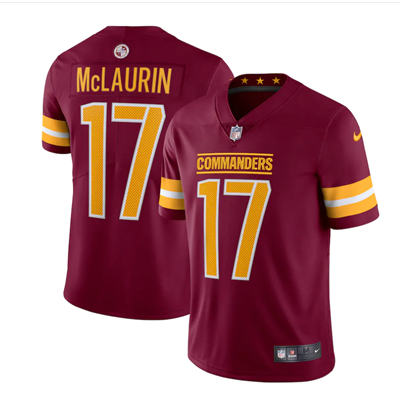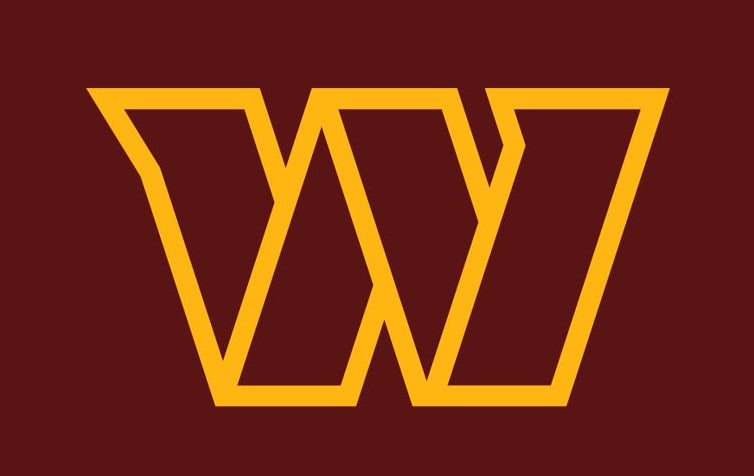The newly renamed Washington Commanders are the only team in the NFL with a chief creative and digital officer rather than a marketing chief.
Will Misselbrook, who hails from the UK (where football is soccer and soccer is football) took the job in 2021 after nearly three years as global head of creative at The Wall Street Journal and a bunch of executive agency roles, including at Bartle Bogle Hegarty, Saatchi & Saatchi and Wieden+Kennedy.
He joined in the interim between the temporary name change from the Washington Redskins to “Washington Football Team,” which was used as a placeholder moniker. Part of Misselbrook’s remit was to help shepherd the team through the rebranding, which kicked off in July 2020 and took just under two years.
“I don’t think I slept for about eight months,” Misselbrook said.
In August 2020, the team launched a website, WashingtonJourney.com (which is no longer active), as a hub to keep fans updated on the name change and crowdsource new name ideas. There were more than 40,000 submissions and 1,200 unique name suggestions.
Although fan reaction to the name change last year was mixed, sentiment bounced back within a few months, “sooner than we expected it to,” Misselbrook said.
“This was a very sensitive thing to go through, and we knew we weren’t going to make everyone happy,” he said. “But it was part of an evolution of the sport and an organizational transformation as well as a national shift in social consciousness, which is why we had to go through this rebrand in the first place.”
Misselbrook spoke with AdExchanger.
AdExchanger: Why do the Commanders need a chief creative and digital officer?
WILL MISSELBROOK: It’s an unconventional title for the NFL, but it’s fairly common in many other industries, especially within entertainment and content. Our focus as a franchise is on becoming an entertainment and media organization, not just a football team.
And so rather than following the norm like every other NFL team and having a CMO, we wanted to flip the traditional marketing approach on its head and put the stories and the content at the forefront of everything we do.
What does that look like in practice?
I’m a football fan, but as an outsider looking in, even before I started speaking with any of the senior leadership, it feels like a lot of NFL teams approach their marketing and creative in a very similar way. But there are opportunities to bring a modern approach and diversify the perception of the sport by tossing out the playbook and creating socially and culturally relevant content across platforms to broaden our reach without alienating our core fans.
Also, media today is very fragmented, which means traditional marketing methods to reach audiences just aren’t enough.
So we’ve expanded our content strategy into new categories like music, food, fashion, the auto space, the financial space – but still rooted in our brand and connected to the players.
 How does data inform your content strategy?
How does data inform your content strategy?
The marketing team regularly has big creative brainstorms where we look at what’s happening in the world outside of football for inspiration.
We’ve also been developing our analytics team internally. We track trending topics, what’s happening in the news and cultural moments, and we track how our own fans and consumers engage with every single piece of content we put out there.
We look at the engagement rate, how long people watch a piece of content before they drop off and where people are engaging across platforms, and we use that data to help us tell stories that resonate rather than just pushing out content or an ad because we think it’s cool and then hoping it works.
How much of this do you do in-house?
We have worked with technology platforms to help with some of our bigger activations and moments, especially for the rebrand. But we do control a lot of this internally.
We have our media team in-house, which lets us be nimble. And we have our own in-house entertainment studio called Washington Branded that we launched earlier this year to create branded and original content.
How many people do you have working on media internally?
The entire Washington Branded team is around 40 people, and we have eight people on the marketing team, including people with media skill sets.
There are three main streams within the talent we have – marketing, creative and content, which encompasses social and digital media – and there’s also a lot of crossover.
Do you work with any agencies?
We don’t. I come from the agency side myself, but it feels like an archaic model in many ways. Because we have our own holistic team, we have the capabilities to do what we need ourselves. That was the thinking behind Washington Branded, to be able to control the narrative ourselves and not have to farm anything out.
Which platforms have been the most effective for you?
There isn’t just one or two. We’re developing content every day to use across Instagram, Facebook, Twitter, YouTube, Snapchat, LinkedIn, TikTok – because the audience for LinkedIn, say, is very different than the audience on TikTok. But we also have more traditional outlets, like out-of-home and even linear. Everything is equally important to us as we continue to grow our awareness.
What about programmatic?
It’s part of our strategy to help us get to the right audiences. But it depends on the initiative, and we’re not running any paid programmatic right now.
What does it depend on?
If we’re doing something big, like launching our new mascot or our new fight song, we want to be able to expand our reach.
In a case like that, it makes sense to put paid programmatic behind it in addition to a big brand campaign, because we want to share that initiative with a much wider audience. We want to reach people we wouldn’t necessarily be able to hit using our own media outlets and channels.
I’d say that programmatic is ad hoc for us right now, but that the strategy is always evolving.
This interview has been edited and condensed.















